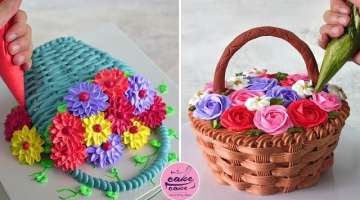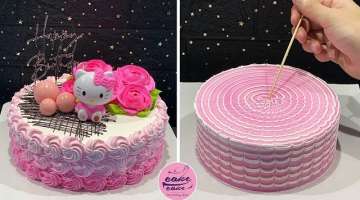Plant A Beautiful Night Garden With Flowers That Bloom At Night (13 Flowers)
We all want gardens that are full of color, texture and visual interest during the day, but have you thought about what your garden looks like at night? Many flowers close when the sun goes down or the temperature drops, which could mean that your outdoor living areas lose some of their visual appeal at night. This may not be a concern for you, but if you enjoy spending time on your patio late in the day or often entertain in the evening, this is something you should consider.
- 1 | 13

Night blooming flowers can reflect the moonlight, add color for your guests to enjoy and are often much more fragrant than their day-blooming counterparts. One of the reasons flowers that bloom at night are often more aromatic is that they need to attract nocturnal pollinators that must find them in the dark. This is also why most night bloomers have white flowers that reflect light and are more visible at night. By planting at least a few night blooming plants in your garden, you can enjoy your garden just as much at night as you do during the day. Breathe in the fragrance, watch butterflies and hummingbirds late into the evening, and enjoy splashes of color through the night. To get you started, here are 13 flowers that bloom at night.
- 2 | 13

1. Evening Primrose: Evening primrose (Oenothera biennis) is a biennial plant native to parts of North America. The blooms open quickly, which means you can sit on your patio in the evening and enjoy the show as the yellow flowers open before your eyes. They will then stay open until about noon the following day. Many parts of the plant are edible, and this is the source of evening primrose oil, which is used to treat eczema, premenstrual syndrome, multiple sclerosis, and rheumatoid arthritis. Evening primrose typically blooms from late spring to late summer and attracts pollinators, including bees, moths, and butterflies.
- 3 | 13

2. Moonflower: Moonflowers (Ipomoea alba) have large, white or pink flowers (usually white) that open quickly in the evening and stay open until after sunrise. On cloudy days, they sometimes stay open later into the afternoon, but usually close in the morning once the sunlight reaches them. This perennial, evergreen vine grows quickly, prefers moist soil and requires at least partial sun, but prefers full sun. Parts of this plant are edible, so it is very important that you differentiate between this moonflower and the next plant on the list, Datura, which is also sometimes referred to as moonflower and is highly poisonous.
- 4 | 13

3. Datura: Datura is sometimes called moonflower but more commonly referred to as devil's trumpet. With large, showy, trumpet-shaped blossoms, these night blooming flowers in shades of pink, purple, yellow, or white are a beautiful addition to a night garden. However, a mentioned above, Daturas are highly poisonous, so they should be planted with caution and never in areas where children or pets spend time. Datura is so poisonous that some cultures have historically used it as poison. Datura plants are usually grown as annuals and can grow to about six feet tall. They are often confused with Brugmansia (aka angel's trumpets), but while devil's trumpets and angel's trumpets are closely related, they are separate genera.
- 5 | 13

4. Brugmansia: Angel's trumpets (Brugmansia) are believed to be extinct in the wild but are commonly seen in gardens and can easily be found at garden centers. Angel's trumpets and devil's trumpets are often confused, but it easy to tell them apart. Angel's trumpet is more or a bush or shrub and can even be grown as a tree, while devil's trumpet is a leafy plant. Another easy-to-identify difference is that the large, peach, white, green, red, orange, or pink, trumpet-shaped flowers of the angel's trumpet hang down towards the ground, while the blooms on a devil's trumpet are erect, facing the sky. These night blooming flowers are easy to grow in Coastal California and in inland areas that are in gardening zones 8 or 9, but, like Datura, angel's trumpets are highly poisonous and should not be planted where children or pets spend time. The fragrance is lovely and will enhance your experience as you enjoy your night garden; just make sure they are out of reach if little ones or pets share your outdoor living areas.
- 6 | 13

5. Night Gladiolus: Night gladiolus (Gladiolus tristis) generally blooms in late spring to mid-summer and can grow to about four feet in height. It is a good grower in coastal and near-coastal California, but it is not drought tolerant and requires regular irrigation. They prefer full sun and well-draining soil, so be sure to mix in compost before planting corms if you are working with the clay soil so common in Southern California. If you want to enjoy these light-yellow flowers that bloom at night and the spicy fragrance they release, be sure to plant them somewhere visible but out of reach for pets and children, since this is another poisonous plant that needs to be kept away from little hands.
- 7 | 13

6. Night Phlox (Zaluzianskya capensis) is also called midnight candy, which is more than just a fun name: It is a nod to the sweet fragrance released by this night blooming flower. Perfect in an evening fragrance garden or a moon garden, night phlox brings both fragrance and color in shades of pink, white and purple. There are even some that are a reddish-maroon hue. Night phlox is an annual that grows well in containers or flowerbeds and attracts butterflies, bees and birds to your garden. Night phlox grows best in full sun or partial shade and is pretty drought-tolerant once established. The honey-almond-vanilla fragrance is a delightful addition to a night garden, particularly for summer and fall entertaining, when they are usually in full bloom.
- 8 | 13

7. Night-Blooming Jasmine (Cestrum nocturnum) is a member of the Solanaceae family, which means it is actually a nightshade and is not the jasmine most folks have in their gardens. This night blooming flower has white blossoms with hints of green and has a strong fragrance that is also most present at night. As an evergreen shrub, night-blooming jasmine adds visual interest to your night garden throughout the year. It is a good grower and is even considered a weed in some parts of the world. The lovely fragrance makes this a good choice for growing near outdoor living areas, but keep in mind that all members of the Solanaceae family have some level of toxicity, and the strong scent is known to be an irritant for some folks with respiratory issues, such as asthma.
- 9 | 13

8. Night-Scented Orchid: You cannot always rely on night-scented orchid (Epidendrum nocturnum) to open its blooms at night, but you can rely on the fragrance those blooms release after the sun goes down. This swamp-loving flower is found in parts of Central America, South America, the West Indies, and Mexico and is most often found in Florida in the United States, but it can be grown elsewhere if you are diligent about watering and maintaining your plants. Since these orchids do not require pollinators for propagation, the white and yellow flowers sometimes open infrequently or not at all.
- 10 | 13

9. Nicotiana is a genus of plants that includes tobacco plants used for making cigars and cigarettes, but the variety that is smoked is usually not counted among the choices available at your local garden center. This night blooming plant can be transplanted from nursery plants, which is the fastest way to add color to your flowerbed, but it germinates quickly, so you might also try growing this one from seed. The flowers that bloom at night usually come in shades of white, pink, green, or red and have a strong fragrance that attracts night pollinators to your yard. If you plant them near your patio, you may be able to enjoy the flowers and the hummingbirds they attract when they open in the late afternoon or early evening. This is another member of the Solanaceae family, so – as with all nightshades – use caution when choosing a spot to plant this one.
- 11 | 13

10. Four O'Clock (Mirabilis jalapa) flowers have some unique qualities when compared to other night blooming plants. A single four o'clock plant can produce more than one color of flower and a single flower will sometimes have more than one color. The colors most often found on four o'clocks are white, yellow, pink, red, or a stunning magenta, which makes them an easy choice for adding color to moon gardens. Four o'clocks are often grown as annuals, but they can be grown as perennials in Coastal California. If you live in an area with cooler winters, they will die back with the first frost, but they will return in spring.
- 12 | 13

11. Casa Blanca Lily (Lilium 'Casa Blanca') are fragrant, beautiful additions to a moon garden where their large, white flowers that bloom at night will reflect the moonlight. This is also a good addition to a cutting garden, just make sure to leave plenty of stem and leaves on the plant to ensure the bulb gets the energy it needs to overwinter in your garden and come back in the spring. When planting these gorgeous flowers, keep in mind that all lilies are toxic to cats and dogs.
- 13 | 13

12. Tuberose (Polianthes tuberosa) is perhaps best known for its inclusion in perfumes, which makes it a good choice if you are looking for a night blooming flower with a strong, inviting fragrance. This perennial plant is easy to grow from bulbs, prefers full sun and warmer climates, and produces clusters of white flowers on a long spike in mid- to late-summer. The white flowers will reflect the moonlight in your night garden, or you can use this one as a cutting flower for bouquets or floral arrangements. You can grow tuberose in flowerbeds and borders, but it will also do just fine in large flowerpots, which might let you get this aromatic choice even closer to your outdoor entertaining areas.



















